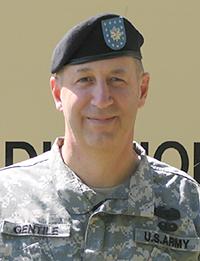Junger, Sebastian, War, Harper Collins, 2010, 287 pp.
The author of The Perfect Storm has written a book about his time with the 173rd Airborne Brigade Combat Team in the remote, steeply mountainous Korengal Valley — 200 kms east of Kabul, and 200 kms northwest of Islamabad. Patrolling and living five times between June 2007 and June 2008 with Second Platoon, Battle Company, Junger gives the reader some sense of the life of combat infantry out at the very end of the logistics chain — small high-altitude outposts protecting larger, lower bases with covering fire. Every creature comfort is reduced to that which will serve weapons and fortification. Niceties like hot and cold running water, cooked food, clean clothes, air-conditioned or heated sleeping quarters are simply absent. No one over 30. No women. No rear-echelon MFs. No one but Taliban wanting to come across the perimeter wire and kill or kidnap you. The troops live for weeks amongst scorpions, camel spiders, dust, and dirt in ramshackle outposts carved out of hilltops with their own hands. Resupply is based on occasional helicopter “speed balls” (air-dropped duffels or kit-bags) or whatever the men can pack on their backs up the mountains. In other words, Fort Apache – Korengal. No generals or pundits or “pros and cons of war” in sight.
The region of Afghanistan is so remote that it has largely been ignored by all forces in the area: Afghan, Pakistani, and European. No central government ever existed in the area. The Korengalis live in small tribes within a valley barely six miles long and one mile across. They were animists and adopted Islam barely a hundred years ago. Though speaking Pashto, they keep largely to themselves. Meager, valley-bottom subsistence farming is subsidized by illegal timber-cutting of the large cedars found high on the mountain-sides. Thus the Korengalis are entirely in thrall to their elders, the local Pakistani timber smugglers, and the Taliban forces that pass back and forth between Pakistan and Afghanistan. The Americans weren’t welcome. No one was.
American forces established themselves in the Korengal to act as “spoilers” for the Taliban transit zone through the neighboring Pech River valley. The 173rd were replacing a previous deployment by the 10th Mountain Division, who in turn had replaced the 1st Battalion, 3rd Marines. The members of Second Platoon, Battle Company of the 173rd were assigned to man an isolated outpost called Restrepo.
Junger’s account of his time with Second Platoon is organized as a set of squad and platoon vignettes on three major themes (Fear, Killing, Love) and bridged with his reflections on his own experiences (patrolling, combat, surviving an IED), interviews and biographic details on the troops in Second Platoon, and a review of the latest literature on combat psychology and physiology. As an established adventurer and war reporter, he was struggling to come to terms with a new and deeper experience of relentless combat in a very small group.

 read, one that
read, one that 

 journalists and officers have been deeply involved, the bitter discussion characterized as “COINdinista vs. Big War crowd” debate is
journalists and officers have been deeply involved, the bitter discussion characterized as “COINdinista vs. Big War crowd” debate is